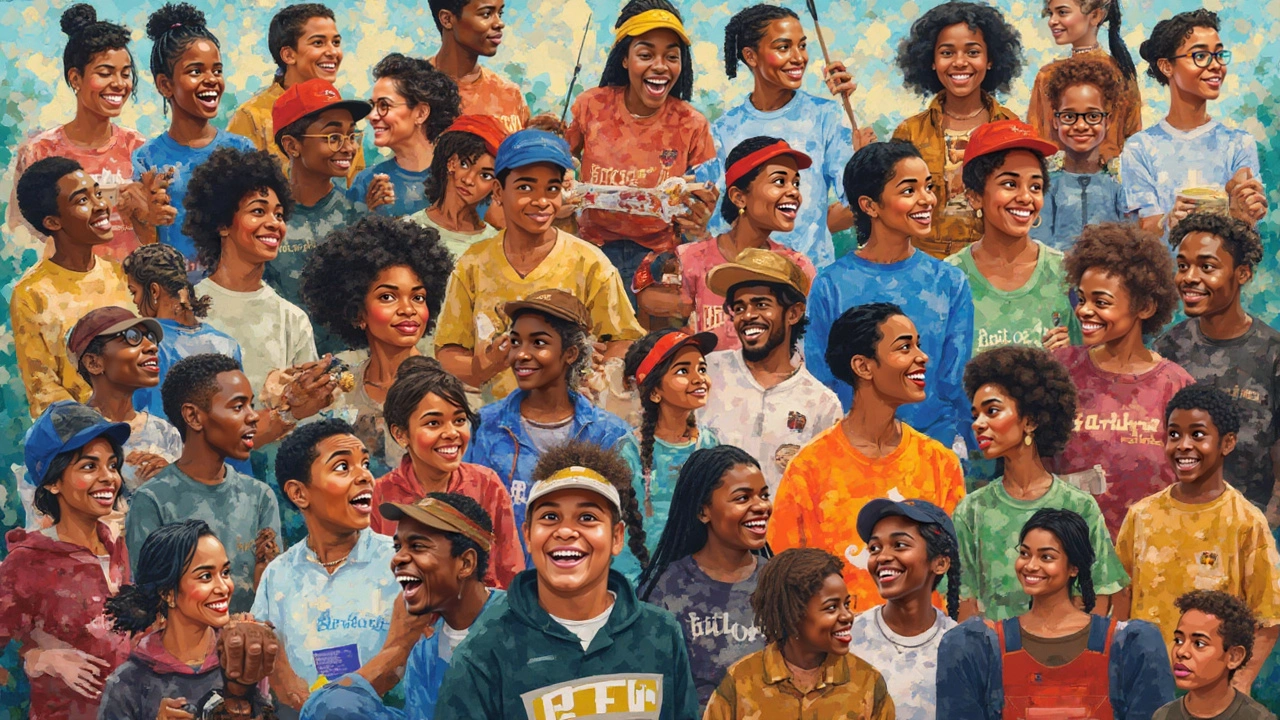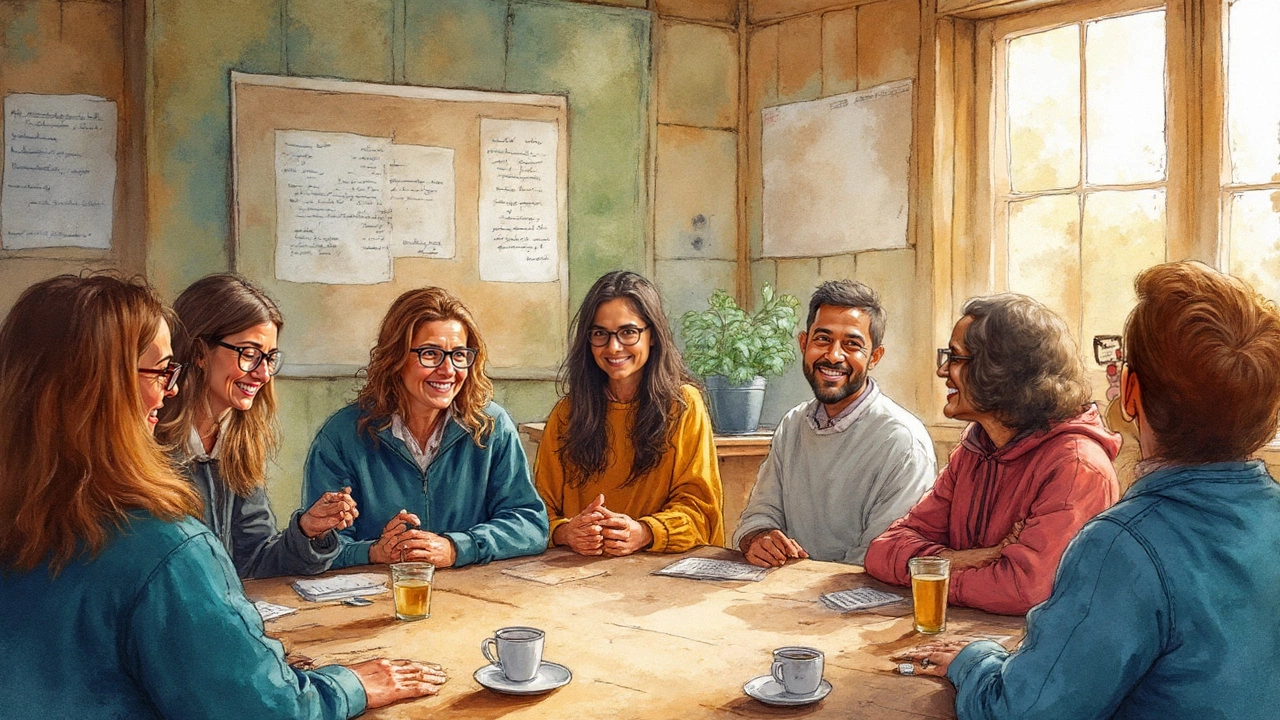Step back for a moment and think about volunteering in America. Who do you picture: an energetic retiree at a food bank, a college student at a marathon, or maybe a soccer mom organizing a fundraiser? Data from recent years breaks the stereotypes, showing a more complex picture of who’s really getting their hands dirty for the greater good. In short, the answer to "what race volunteers the most?" might surprise you. This is a question with more nuance than you’d expect, and the numbers give a window into cultural norms, access, and motivation. Let’s dig into the cold, hard facts, and see what really drives the volunteer engine in America.
Breaking Down Volunteer Demographics: The Big Reveal
When you look at national numbers, the volunteering landscape is pretty fascinating. The U.S. Census Bureau and Bureau of Labor Statistics have, for years, put together data showing how people pitch in for the community. Here’s the kicker: according to the last comprehensive reports (with data up to 2023), White Americans still top the charts when it comes to formal volunteering rates. About 27-28% of White adults volunteered at least once a year, compared to about 18-20% of African American adults, roughly 14-16% of Hispanic and Latino adults, and about 17-19% of Asian American adults.
But don’t just take my word for it. The table below breaks down the stats from 2023, showing how these numbers stack up:
| Race/Ethnicity | Volunteering Rate (%) | Typical Causes |
|---|---|---|
| White | 27.5 | Education, food aid, health |
| African American | 19.0 | Faith groups, youth programs |
| Hispanic / Latino | 15.3 | Community events, schools |
| Asian American | 17.6 | Health, environment, culture |
But here’s where things get even more interesting—volunteering isn’t just about what the formal stats say. Many people in communities of color volunteer informally, helping neighbors, cooking meals, or babysitting. It just goes unreported because it’s not through a registered group. That means the real story might be hiding in plain sight, especially in cultures where family and social responsibility are naturally blended into daily life, not just scheduled as events.
Why Do Volunteering Rates Differ?
The fact that White Americans lead formal volunteering rates isn’t just a coincidence. There are a bunch of factors, and most are tied to access, opportunity, and historical patterns. For a lot of people, volunteering means having time, transportation, or even childcare if they want to help out. These advantages tend to align with societal privilege—which is often more available to White Americans, particularly those in higher income brackets. Being able to work fewer jobs or have a flexible work schedule makes it way easier to sign up for that beach clean-up on a Saturday morning.
But culture shapes volunteering, too. In some African American communities, helping others often happens through churches and faith groups, yet it’s sometimes not reported as “formal volunteering.” In Hispanic and Latino communities, there’s a heavy focus on family and mutual aid. People pitch in by caring for relatives or supporting big family events, but these aren’t tracked by official tallies. So, when you look at stats, you’ve got to remember that a ton of generosity is invisible in the data.
There are practical barriers, too. Immigration status can stop some groups from participating in organizations that require background checks or citizenship. Language skills, distrust in formal organizations due to past discrimination, and even lack of awareness about volunteer opportunities play a role. Some folks just flat out don’t get asked—or don’t see themselves represented in the organizations that are doing the asking.

Volunteering Beyond the Numbers: Stories from the Field
The sharpest picture of volunteering isn’t always in the spreadsheets—it’s in real, lived experiences. Here’s what folks involved in their communities often see up close: African American churches act as anchor points in their neighborhoods, not just offering worship on Sunday but also running food pantries, scholarships, and Thanksgiving drives. In Los Angeles, for example, Black congregations feed thousands every month, staffed almost entirely by volunteers. These efforts rarely get counted in the official volunteer tallies.
Latino families are well-known for organizing community events and helping neighbors, even if they don’t fill out an application or log hours on a sheet. Family and extended relationships are the backbone of their support systems. When Hurricane Maria hit Puerto Rico, community networks were the main reason so many were able to get food, water, and repairs quickly—most of that volunteering was informal, but absolutely critical.
Asian American communities often come together around music classes, language schools, and festivals, relying on parents and retirees who put in hundreds of hours running these programs. These acts are deeply valued, passed down through generations, and keep culture alive. Each community brings its own flavor—sometimes it’s more about the collective than the individual spotlight.
Tricks to Boost Volunteering in Every Community
So how do we move the needle? If the big challenge is that some folks don’t have the time or resources, or simply don’t know about opportunities, there are ways to tackle that. Organizations looking to diversify their volunteers have started to ditch one-size-fits-all recruiting and, instead, reach into neighborhoods, schools, churches, and community centers where trust already exists. Here are a few tips that make a real difference:
- Don’t just post flyers and expect people to come. Tap into local leaders—pastors, coaches, teachers—who can vouch for the program.
- Offer translation and flexible scheduling, so folks who work multiple jobs or speak English as a second language can still be involved.
- Provide childcare or let kids help, turning volunteering into a whole-family affair.
- Highlight different ways to contribute: some might love to teach, others might be better behind the scenes, and that’s all valuable.
- Show pride in all types of volunteering—even the “unofficial” kind. Consider recognizing neighbor-to-neighbor help and family caregiving.
- Track and share success stories from varied backgrounds to prove everyone belongs.
If you’re just one person wanting to do more, try searching "mutual aid networks" in your area or ask around locally. A lot of under-the-radar groups don’t advertise but would love a helping hand. Or, if you’re more of a planner, reach out to established nonprofits and ask if they cater to multicultural needs.

Looking Ahead: The Future of Volunteering Across Races
Let’s get real—the days where all volunteers looked and acted the same are long gone. The future of volunteering is about recognizing all the ways folks support one another, not just the official hours clocked at a big organization’s fundraiser. As conversations around equity and representation grow louder, more organizations are putting genuine effort into including traditionally overlooked groups. In fact, in 2024 and 2025, we’ve seen a rise in “choice-based” volunteering—where people choose activities that fit their lifestyle, culture, and skills, without having to plug into a formal structure.
The most recent Gallup polls show that younger people (especially Gen Z and Millennials) are more likely to volunteer with groups focused on social justice or mutual aid, and this is bringing in more diversity. But many organizations have a long way to go. Real inclusion means more than just inviting everyone; it’s about recognizing cultural norms, building trust, and erasing the barriers that keep some from joining up. We’re seeing more resources being put into interpreter services, transportation stipends, and childcare—but it’s just a start.
If you’re part of an organization, this is the best time to look at your volunteer program through a wider lens. Is the opportunity accessible, or is it only easy for people with certain backgrounds? Are you measuring all types of help, not just what fits neatly on a spreadsheet? Celebrate informal help as much as the word “volunteer” itself. Stepping up for your block, your school, or your neighbor still counts. And if you want to boost your own contribution, just remember: every little act adds up, and the most important step is the first one you take.
